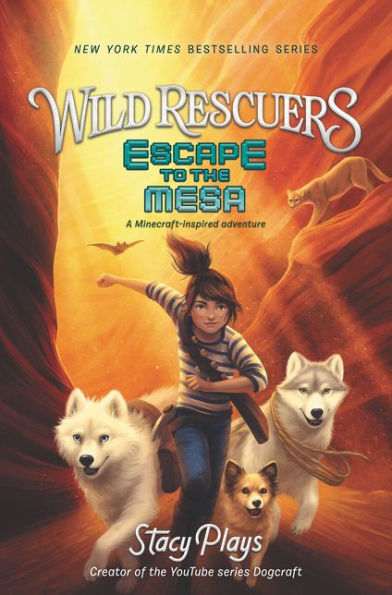Stacy and her wolf family know it’s important to protect each other and the animals of the taiga. After a fire rages through the forest, Stacy and the wolves try to avoid humans at all costs. But when a reporter takes a picture of one of the wolves, animal researchers begin searching for intelligent wolves that raised Stacy. Stacy and her pack know they must leave the forest and escape to a place where no arctic wolf has ever gone before: the desert.
The mesa is unlike anything the wolves have ever seen. With no source of freshwater, the group knows they must find a place to hide. Even though they are in unfamiliar territory, the group still finds animals in need of rescue. When the wolves find themselves in new situations, Stacy discovers that the wolves have hidden abilities. As Stacy tries to help keep her pack safe, she must enter the human world, which makes her wonder—where does she belong?
Stacy is a relatable character who loves her wolf family and the wilderness. Stacy and the wolves learn about the mesa, including what plants are safe to eat as well as some of the dangers that lurk in the desert. Although the plot is similar to the first book, the new setting helps keep the story interesting. Stacy tries to avoid humans, but she has several encounters with people that show them in a positive light.
Like the first book of the series, Escape to the Mesa has non-stop action, danger, and a unique plotline that will keep readers turning pages until the very end. Parents and teachers will appreciate Escape to the Mesa because of the educational value. Not only does the story highlight the need to care for nature, but it also helps readers gain new vocabulary skills. The book contains some difficult vocabulary such as cacophony, cladode, hoodoo, and podzol; however, these words appear in the glossary at the back of the book. Another positive aspect of the story is the black-and-white pictures that are scattered throughout the book.
Escape to the Mesa’s conclusion has a hopeful tone that highlights the importance of preserving nature. Because the story is the second book in the series, readers should read Guardians of the Taiga first because there are several characters and plot points that are introduced in book one. The book ends with a selection of other reading material—the inspiration for one of the characters and an interview with an animal expert.
Escape to the Mesa will appeal to a wide range of readers including those who love animals, daring characters, and action. Readers who enjoy this series should add the Simon Thorn Series to their list of must-read books.
Sexual Content
- None
Violence
- When a wolf is trying to help a porcupine, the porcupine shoots quills at it. “The wolf turned toward her [Stacy] with a face full of quills and whined softly, crouched down in the long grass.
- Stacy finds a crashed helicopter that had “a few white bones among the ashes, and Stacy felt sick at the sight. Humans had died here.”
- A researcher shoots a wolf with a tranquilizer dart.
- Stacy and the wolves are swept away by a flash flood. “Stacy tumbled over and over, losing track of which direction was the surface. Her arm scraped stingingly along the side of the canyon. Stacy’s chest felt like it was burning. She needed to breathe, soon.” Everyone survives.
Drugs and Alcohol
- None
Language
- None
Supernatural
- Stacy and the wolves are able to communicate, and the wolves can perform some human-like tasks.
- A dog can communicate with bats through echolocation and is also able to understand Stacy’s words.
- Some of the wolves have supernatural abilities. Basil has “superwolf speed” and can run “incredibly, unnaturally fast.” Noah can breathe underwater and Addison can read.
Spiritual Content
- None










